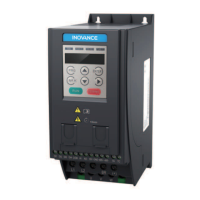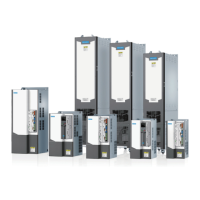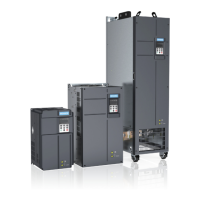Function Application
‑534‑
Para. Function Default Value Range Description
Contin
ued
Continued Contin
ued
5: Dynamic auto‑tuning 3 of the
asynchronous motor (Auto‑tuning
on mutual inductance curve
requires no load, light load, or pure
inertia load; V/f, SVC, and FVC
modes are supported)
This method is applicable to scenarios with high‑
speed revolution. Auto‑tuning with no load, light
load (below 10% load), or pure inertia load is
supported.
Auto‑tuning is performed on all the motor
parameters, including F1‑06 (Asynchronous motor
stator resistance), F1‑07 (Asynchronous motor
rotor resistance), F1‑08 (Asynchronous motor
leakage inductance), F1‑09 (Asynchronous motor
mutual inductance), F1‑10 (Asynchronous motor
no‑load current), and F1‑30 (Encoder phase
sequence).
Contin
ued
Continued Contin
ued
11: Static auto‑tuning on partial
parameters of the synchronous
motor (excluding back EMF)
It is applicable to auto‑tuning of the synchronous
motor with load and to scenarios where the
motor cannot be disconnected from the load.
Auto‑tuning is performed on the following motor
parameters in the FVC mode: F1‑06 (Motor stator
resistance), F1‑17 (Synchronous motor d‑axis
inductance), F1‑18 (Synchronous motor q‑axis
inductance), F1‑20 (Filter time constant), F1‑21
(Oscillation suppression gain), F1‑30 (Encoder
phase sequence), and F1‑31 (Encoder zero
position angle). Auto‑tuning is performed on the
following motor parameters in other modes:
F1‑06 (Motor stator resistance), F1‑17
(Synchronous motor d‑axis inductance), F1‑18
(Synchronous motor q‑axis inductance), F1‑20
(Filter time constant), and F1‑21 (Oscillation
suppression gain).

